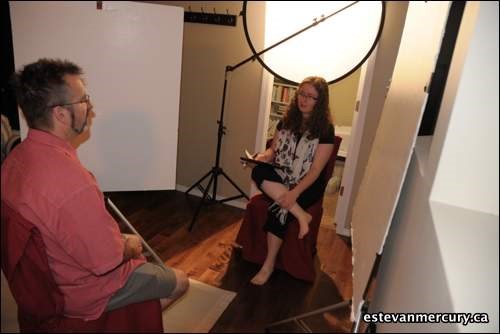One filmmaker is asking for the public's help on her journey to find Al Capone in Saskatchewan.
The notorious gangster of the 1920s enjoys a storied history of his contribution to the Chicago liquor scene in Prohibition-era America. What is less known are his ties to rural and southern Saskatchewan.
Filmmaker and journalist Kelly-Anne Riess is looking to shed greater light on the connections Capone had to this part of Canada. His ties to Moose Jaw have generated an entire tourism industry in the small Saskatchewan city once known as Little Chicago. Last August, she and her team of researchers began work on a documentary, entitled Finding Al, and are now looking for people in the southeast who may have had relatives with ties to Capone and his bootlegging ring.
Riess and her team seek to confirm Capone's ties to Moose Jaw, and link him to other stories from Weyburn and Bienfait.
"We're looking for people in the Estevan area who might have stories that they're willing to share with us, about whether or not their grandfather knew Capone. We're looking to trace their family connections back down to Chicago," said Riess. "It's a way for people to also look into their own ancestry and see if these stories are true and what sort of merits they have."
The Saskatchewan native said she was fascinated to figure out if Capone was in fact ever in her home province. As she pointed out, there is some skepticism toward his visits.
"A lot of people always ask when you go down to Chicago, 'Oh, is Moose Jaw still trying to pull off that Capone connection?' But the more I started to look into it as a filmmaker, I kind of started to get convinced that maybe Al Capone was in Saskatchewan," she said.
She said there is plenty of evidence that might support Capone's Prairie presence at the end of the 1920s. Prohibition in Saskatchewan ended in 1925, and that's when it's likely Capone turned to the Canadian Prairies for a steady supply of booze to smuggle into Illinois.
"The Soo Line went directly from Chicago to Moose Jaw, and people like Al Capone were business people, so they would be looking for ways to bring in alcohol from Canada. He obviously had more than one connection, because if police arrested one of his distributors, he might want another link to Canada," said Riess. "Saskatchewan would have been his other connection to Canadian alcohol, so if something happened to his Ontario connection he could get it from Saskatchewan."
Speaking with people in the southeast thus far has led to Riess meeting some people in Weyburn who say their grandfather knew Capone.
"(They said) their grandfather knew Al Capone and was using cars and such to transfer alcohol across the border. One guy said his grandfather went down to Chicago every February to meet with Al Capone and that there might have been a picture of him."
In addition to hiding alcohol under rail cars, Riess said it's possible they were also transporting the goods by car. If alcohol were being moved via car, it's possible Capone drove through Estevan and down Highway 39.
A book called Rum Runners of Canada alludes to the Bronfman family, who owned the Seagram Company, and made many millions during Prohibition with their alcohol production. The book details a meeting between the Bronfmans and Capone in Bienfait.
"All these independent stories have come up all over Saskatchewan, so I think it's possible that there are some connections because all these independent people that aren't related lends some credibility to maybe the fact that Capone was in Saskatchewan."
Right now, Riess and her team are following paper trails and examining documents that support his presence. She said she has already interviewed one of Capone's surviving family members, who said Capone did have a connection to the province and used to call the Prairies God's country.
She has spoken to a number of people from Moose Jaw about the project, including Jim Dixon, a city councillor during the 1970s, who spoke about the tunnels under the city that at that time were simple rumours. Dixon was involved in investigating the tunnels. He found a hidden room under a manhole cover and the investigation uncovered further rooms under hotels.
The tunnels have been linked to rum-running and are now one of the biggest tourist draws in Moose Jaw.
For those who think they may have some information that could link Capone to the province, they are asked to visit the Finding Al Documentary Facebook group or going to www.findingaldocumentary.com



